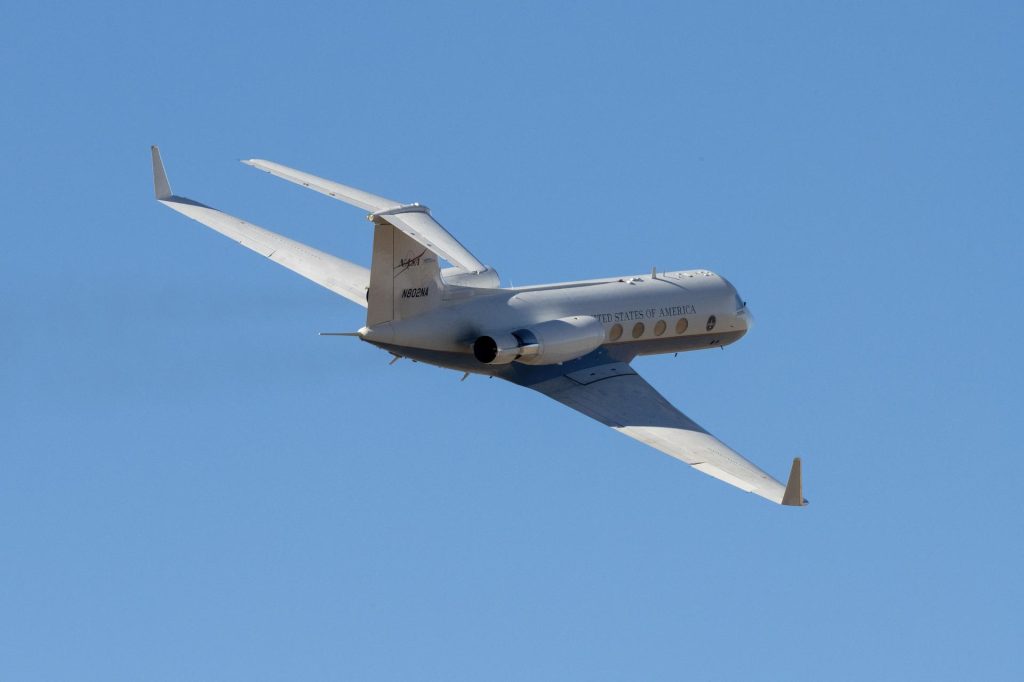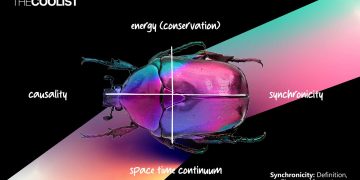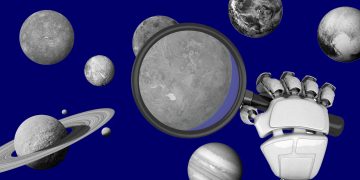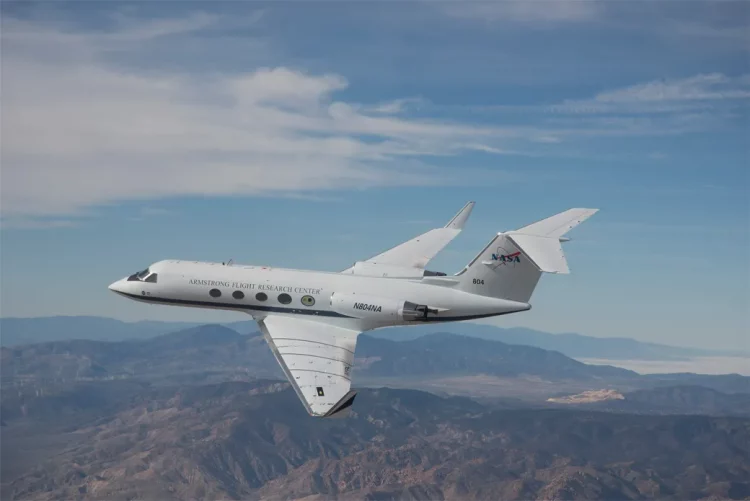In a groundbreaking effort to deepen our comprehension of Earth’s atmosphere and climate, NASA’s Armstrong Flight Research Center has successfully completed a significant data collection mission using its specialized aircraft. Over the course of 150 hours of flight time, these aircraft have gathered critical data that will advance our knowledge of various atmospheric processes, climate change, and environmental monitoring. This comprehensive article explores the scope of the mission, the technology involved, and the broader implications of the data collected.
1. The Importance of Atmospheric Research
Understanding Earth’s atmosphere is crucial for numerous reasons, including climate science, weather forecasting, and environmental protection. The atmosphere is a complex system that influences global weather patterns, climate, and even the habitability of our planet. NASA’s mission to collect data from the atmosphere aims to provide a clearer picture of these processes and support efforts to address climate-related challenges.
1.1 Key Objectives of Atmospheric Research
- Climate Monitoring: Tracking changes in atmospheric composition and temperature to understand global warming trends and their impact on climate systems.
- Weather Prediction: Enhancing weather models with detailed atmospheric data to improve forecasting accuracy and early warning systems for extreme weather events.
- Environmental Protection: Monitoring pollutants and greenhouse gases to inform policies and strategies for reducing environmental impact and protecting natural resources.
2. NASA’s Armstrong Flight Research Center: A Hub for Innovation
NASA’s Armstrong Flight Research Center, located at Edwards Air Force Base in California, is renowned for its contributions to aviation and aerospace research. The center plays a pivotal role in advancing flight technologies and conducting atmospheric studies.
2.1 Historical Background
Armstrong Flight Research Center, originally known as the Dryden Flight Research Center, has a storied history of conducting high-profile aviation research. It has been instrumental in testing cutting-edge aircraft and technologies, contributing to advancements in aeronautics and space exploration.
2.2 Facilities and Expertise
The center is equipped with state-of-the-art facilities and aircraft designed for various research purposes. Its team of experts includes aerospace engineers, scientists, and pilots who collaborate on a wide range of projects. The center’s capabilities enable it to conduct complex flight tests and gather valuable data for scientific research.
3. The Aircraft and Technologies Involved
NASA’s data collection mission utilized several advanced aircraft, each equipped with specialized instruments and sensors. These aircraft were chosen for their ability to operate at different altitudes and collect diverse types of data.
3.1 Types of Aircraft Used
- High-Altitude Aircraft: Designed to operate at the edge of space, these aircraft collect data from the upper atmosphere and near-space regions. Their high altitude capability allows them to capture data on atmospheric layers that are difficult to access from the ground.
- Research Aircraft: Equipped with a range of sensors and instruments, these aircraft conduct detailed atmospheric measurements, including temperature, pressure, humidity, and gas concentrations. They are used for in-depth studies of specific atmospheric phenomena.
- Specialized Data Collection Platforms: Some aircraft are modified with specialized equipment for specific research goals, such as studying cloud formation, radiation, or air quality.
3.2 Instrumentation and Data Collection
The aircraft were equipped with cutting-edge instrumentation to gather a wide range of data:
- Spectrometers: Measure the concentration of various gases in the atmosphere, including greenhouse gases and pollutants.
- Lidar Systems: Use laser technology to study atmospheric particles, aerosols, and cloud structures.
- Radiometers: Measure the intensity of radiation from the Sun and Earth to understand energy transfer and climate dynamics.
- Atmospheric Sensors: Collect data on temperature, humidity, and pressure, providing insights into atmospheric conditions and weather patterns.

4. Data Collection and Analysis
The 150 hours of data collection involved a rigorous process of flying at different altitudes and locations to capture a comprehensive set of atmospheric measurements. The data gathered will be analyzed to achieve several key research objectives.
4.1 Flight Operations and Methodology
The aircraft conducted multiple flights over diverse geographic regions and atmospheric conditions to ensure a representative dataset. The methodology involved:
- Flight Planning: Carefully planned flight paths to cover various altitudes and regions, including both urban and rural areas, to capture a wide range of atmospheric conditions.
- Data Acquisition: Continuous data collection during flight, with real-time monitoring and adjustments to ensure high-quality measurements.
- Post-Flight Processing: Data from each flight is processed and validated to ensure accuracy and reliability. This involves calibration of instruments and correction of any anomalies.
4.2 Key Findings and Insights
Preliminary analysis of the collected data provides valuable insights into several areas:
- Greenhouse Gas Concentrations: Measurement of greenhouse gases such as carbon dioxide and methane to track their levels and distribution in the atmosphere.
- Cloud Formation and Dynamics: Understanding cloud properties, formation processes, and their impact on climate.
- Air Quality: Assessing pollutant levels and their sources, contributing to environmental monitoring and public health research.
5. Implications for Climate Science and Policy
The data collected by NASA’s aircraft has significant implications for climate science, environmental policy, and public awareness.
5.1 Advancing Climate Research
The detailed atmospheric data helps scientists understand climate change mechanisms and their impact on the environment:
- Climate Models: Enhancing the accuracy of climate models with up-to-date atmospheric data, improving predictions of future climate scenarios.
- Understanding Climate Feedbacks: Investigating how changes in atmospheric composition and cloud cover affect climate feedback mechanisms.
5.2 Informing Policy and Decision-Making
The insights gained from the data support the development of informed policies and strategies:
- Environmental Regulations: Providing data to support regulations aimed at reducing greenhouse gas emissions and improving air quality.
- Climate Action Plans: Informing national and international climate action plans with accurate data on atmospheric changes and trends.
5.3 Public Awareness and Education
The mission also contributes to public awareness and education about atmospheric and environmental issues:
- Educational Outreach: Engaging with educators and students to promote understanding of atmospheric science and climate change.
- Public Communication: Sharing findings with the public to raise awareness about the importance of environmental protection and climate action.
6. Future Directions and Continued Research
NASA’s data collection mission is part of a broader effort to advance atmospheric research and address environmental challenges. Future research will build on the findings from this mission and explore new areas of investigation.
6.1 Upcoming Missions and Projects
NASA plans to continue its atmospheric research with additional missions and projects:
- Extended Data Collection: Conducting further flights and experiments to gather more comprehensive data on atmospheric processes and climate.
- Collaborative Research: Partnering with other space agencies and research institutions to expand the scope of atmospheric studies and share data.
6.2 Technological Innovations
Ongoing advancements in technology will enhance future data collection efforts:
- Enhanced Sensors: Developing more sensitive and accurate sensors for improved atmospheric measurements.
- Advanced Data Analytics: Utilizing artificial intelligence and machine learning to analyze large datasets and identify patterns.
6.3 Addressing Emerging Challenges
Future research will also address emerging challenges related to climate change and environmental sustainability:
- Climate Adaptation: Studying the impacts of climate change on ecosystems and developing strategies for adaptation and resilience.
- Sustainable Solutions: Exploring innovative solutions for reducing environmental impact and promoting sustainable practices.
7. Conclusion
NASA’s successful data collection mission represents a significant achievement in atmospheric research and climate science. The 150 hours of flight time provided valuable insights into Earth’s atmosphere, contributing to our understanding of climate dynamics, environmental monitoring, and policy development.
As we continue to explore and study our planet’s atmosphere, NASA’s efforts play a crucial role in advancing scientific knowledge and addressing the challenges of climate change. Through ongoing research, technological innovation, and collaborative efforts, we can work towards a more informed and sustainable future for our planet.

















































Discussion about this post